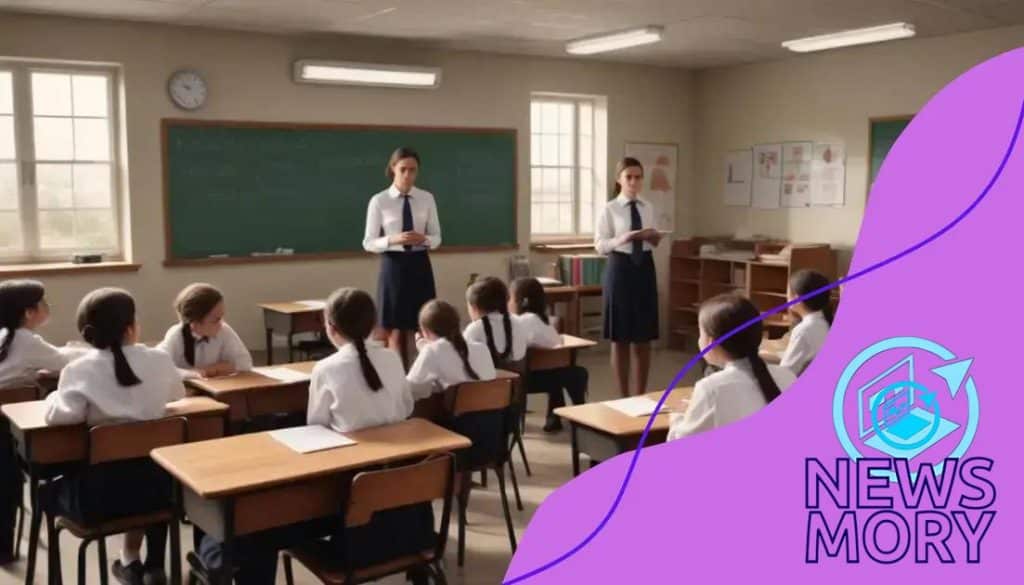Dismantling Department of Education: What’s really at stake for America’s classrooms?

Anúncios
Dismantling Department of Education isn’t just a trending policy idea, it’s a conversation that touches the core of how we teach our kids. Could more local power transform education?
Or would removing federal oversight widen gaps and weaken public schools? Before forming an opinion, it’s worth exploring what this really means for the future of learning in America.
Understanding the current structure of the Department of Education
The Dismantling Department of Education debate starts with understanding how the agency currently functions. Its central structure isn’t just administrative, it helps shape education from coast to coast, setting policies that guide school systems across the nation.
Anúncios
This federal body funds programs supporting everything from rural classrooms to urban districts. Its role is to create consistency in access and standards, ensuring that every student, regardless of background, has a shot at success.
Without the Department’s structure, many worry the national education system would splinter. States would shoulder full responsibility, but would they have the tools to manage funding, equity, and oversight on their own?
Federal vs. state authority
The tension between federal and state control is central to the Dismantling Department of Education debate. The Department sets national guidelines, but states determine how to apply them, a delicate balance of governance and autonomy.
Anúncios
Some argue this blend allows innovation while protecting quality. Others believe federal rules stifle local flexibility, forcing states to fit a mold that doesn’t reflect their communities’ needs.
Eliminating the Department would tilt this balance entirely to the states. That could foster creativity, or cause fragmentation, with varying standards and unequal opportunities across the country.
Main offices and their functions
The Department of Education isn’t a monolith, it’s a collection of offices tackling unique aspects of learning. Understanding these roles helps reveal what might be lost through Dismantling Department of Education proposals.
The Office of Elementary and Secondary Education funds and guides K-12 systems nationwide. It supports teacher development, assessments, and accountability.
Special education is championed by the Office of Special Education and Rehabilitative Services. Without it, federal protections for students with disabilities might weaken.
Higher education relies on the Office of Postsecondary Education to manage student aid. Its absence could create chaos in college access and affordability.
Key arguments for dismantling the Department of Education
Supporters of Dismantling Department of Education often argue that less federal control would empower states to innovate. They believe a decentralized approach can better meet the needs of diverse communities.
Local control might allow schools to tailor programs and funding to reflect local values. Critics of the Department view its one-size-fits-all approach as outdated and restrictive.
The argument hinges on trust, trust that states will rise to the occasion and invest wisely in their educational systems, without needing federal guidance or intervention.
Increased flexibility
Removing federal layers could offer schools increased agility. In a Dismantling Department of Education scenario, districts might freely implement teaching styles, update curricula, and reallocate funds without red tape.
Schools could focus on local priorities, from STEM to vocational education, based on what their students actually need.
This flexibility could spark a renaissance of educational experimentation, but it also runs the risk of inconsistency in quality and outcomes across state lines.
Reducing federal spending
Another argument focuses on cost. Proponents of Dismantling Department of Education suggest that its multi-billion-dollar budget could be redistributed, letting states decide how to spend those funds.
They argue this would lead to more efficient use of taxpayer dollars, cutting bureaucracy and focusing resources where they matter most, classrooms.
However, others warn that cutting federal spending without safeguards may harm students in under-resourced areas, especially where state funding is already stretched thin.
Potential impacts on funding and resources for schools
One of the most pressing concerns in the Dismantling Department of Education debate is the potential impact on school funding. Many public schools depend on federal dollars to provide basic programs and support.
If the Department disappears, states may not have the capacity, or the political will, to replace these funds. Schools serving disadvantaged students could be hit the hardest.
The ripple effects could include reduced services, fewer educators, and larger class sizes, all of which compromise the quality of education.
Funding redistribution
Without a central agency, funding would likely be redistributed based on each state’s individual policies. Some might increase investment in public education, while others could cut back.
Wealthier states may be able to maintain or even improve services, while low-income areas might fall further behind.
This variability risks deepening existing inequities, creating a system where a child’s education depends too heavily on their zip code.
Resource allocation challenges
Under a Dismantling Department of Education scenario, schools would face tough choices. Without federal oversight, how resources are allocated would vary widely.
Rural districts, already struggling to hire and retain qualified teachers, could suffer further cuts. Programs for English learners or students with disabilities might disappear.
Additionally, many support programs, like after-school care or school nutrition, might no longer be viable, hurting students who rely on schools for more than academics.

The role of states in education post-dismantling
Should the Dismantling Department of Education move forward, the role of states would dramatically expand. States would gain full control over policy, curriculum, and funding decisions.
Each state could redefine what education looks like. While this might foster innovation, it also raises concerns about coherence, access, and accountability.
States would need to navigate a complex landscape, balancing freedom with responsibility in an era of rapidly evolving educational demands.
Setting educational standards
Creating new educational standards would fall entirely to individual states. This could be an opportunity to align teaching more closely with local values and cultural contexts.
However, it may also lead to disparities in what students learn from state to state. While one state might prioritize digital literacy, another could overlook it entirely.
This inconsistency could pose challenges for college admissions and workforce preparation, where national benchmarks often apply.
Funding challenges and opportunities
Post-dismantling, states would need to secure new funding streams. Some might raise local taxes, others may cut elsewhere or turn to private partnerships.
This shift could bring creativity to school finance, but it might also strain budgets already under pressure.
The success of such a system would depend on each state’s political and economic priorities, potentially leaving vulnerable students behind in less resourced regions.
Alternatives to a federal education system
Without a federal system, education would take on new forms. In the Dismantling Department of Education debate, alternatives include local control, school choice, and community-led initiatives.
These approaches may offer more customized learning experiences. Still, they raise critical questions about oversight, equity, and long-term effectiveness.
Understanding these alternatives helps us envision what education might look like in a post-federal era.
Charter and magnet schools
Charter and magnet schools already operate with more autonomy than traditional public schools. Their success stories are often used to support Dismantling Department of Education arguments.
These schools can specialize in subjects like the arts or STEM, offering families more choices. Their flexibility allows rapid adaptation to student needs.
But critics point out that such schools sometimes divert funds from traditional public schools, raising concerns about fairness and long-term outcomes.
Community-based education initiatives
Community-led education models rely on local partnerships. These grassroots efforts often emerge in response to specific needs unmet by centralized systems.
They bring unique advantages, like hands-on learning, mentorship programs, and real-world skills training, while promoting civic engagement.
In a decentralized system, such initiatives could flourish, but would also need strong support to ensure they don’t widen the achievement gap further.
Public opinion on dismantling the Department of Education
Public opinion on Dismantling Department of Education is sharply divided. Some Americans welcome the idea of local empowerment, while others fear increased inequality and diminished support for vulnerable students.
Understanding these views is crucial in shaping policies that reflect national priorities while respecting regional differences.
Surveys show that education remains one of the most personal and emotional political issues in the country.
Concerns about equity
A significant share of the public fears that dismantling the Department could worsen inequality. They argue federal oversight is essential to ensuring all children, regardless of background, receive a fair shot.
There’s worry that states might not fund education equally, leaving rural or inner-city schools at a disadvantage.
These concerns reflect a desire for consistency and justice in how education is delivered across America.
Support for local control
On the other hand, many citizens believe federal rules have become too burdensome. They view Dismantling Department of Education as a way to return power to communities.
Supporters see this as a chance to restore flexibility, innovation, and cultural relevance in the classroom.
This segment argues that those closest to the students, teachers, parents, local leaders, should guide educational decisions, not distant federal bureaucracies.
FAQ – Frequently Asked Questions About Dismantling the Department of Education
What are the primary concerns about dismantling the Department of Education?
The main concerns include potential loss of federal funding, increased inequality in education, and the absence of standardized educational policies.
How could local control benefit education systems?
Local control could allow communities to tailor educational programs to their specific needs and foster innovative teaching methods.
What impact might this have on disadvantaged schools?
Disadvantaged schools might struggle more without federal support, leading to greater disparities in educational resources and opportunities.
How can communities engage in education decisions if the Department is dismantled?
Communities could form partnerships with local schools, participate in school board meetings, and advocate for policies that reflect their unique educational needs.





